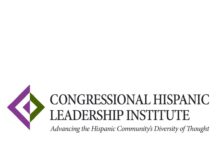PRINCETON, New Jersey, Jan. 26, 2016 /PRNewswire-HISPANIC PR WIRE/ — As higher education officials struggled to find race-neutral alternative college admissions policies in the aftermath of the Supreme Court’s 2013 Fisher v. University of Texas at Austin ruling, a new series of studies commissioned by Educational Testing Service (ETS), finds that race-neutral approaches fall far short.
Logo – http://photos.prnewswire.com/prnh/20120110/DC33419LOGO
The four studies were commissioned by ETS’s Policy Evaluation & Research Center and conducted in cooperation with the Civil Rights Project at UCLA. In the search for substitutes for race, nationally known researchers looked at:
- socioeconomic (SES) factors
- state-sponsored guaranteed college admission programs
- use of correlates of race, and
- the University of California’s race-neutral efforts.
In the first study, “Can Socioeconomic Status Substitute for Race in Affirmative Action College Admissions Policies?” Sean F. Reardon, Stanford Graduate School of Education, et al, researchers concluded that even relatively aggressive SES-based affirmative action policies do not mimic the positive effects of race-based policies on racial diversity. They also found that the SES model will not have much effect on who attends college, but only on which college they attend if they do. Moderate levels of race- and/or SES-based affirmative action appear unlikely to result in high-achieving minority or low-SES students enrolling, on average, in colleges where their academic preparation was below the average level for the college in which they enrolled.
In the second study, “Texas Top Ten Percent Plan: How It Works, What Are Its Limits, and Recommendations to Consider” by Stella M. Flores, New York University and The Steinhardt Institute for Higher Education Policy, New York, NY and Catherine L. Horn University of Houston and the Institute for Educational Policy Research and Evaluation, researchers examined guaranteed admission, or “percent plans” currently being used by Texas, California and Florida as race-neutral paths to college admissions. Besides determining that the effectiveness of percent plans may be more attributable to soaring numbers of non-White students, especially Latinos, seeking college, the authors also found that underrepresented students who are percent-plan-eligible are more likely to enroll in a nonselective flagship institution. This is likely the result of concentrated disadvantage both economically and in high schools attended.
In the third study,”The Promise and Peril for Universities Using Correlates of Race in Admissions in Response to the Grutter and Fisher Decisions,” Mark Long University of Washington, looked at the question, “If university admission offices used all the information they could obtain on an applicant (aside from the student’s race), how well would that information correlate with a student’s race?” Long found that using 195 characteristics of ELS students correctly predicted the student’s underrepresented minority status 82% of the time. This might be further improved, the author notes, if universities acquired information on household purchasing habits. However, that might engender adverse behavioral responses and invite political challenges. Thus, replacing underrepresented minority status with the predicted likelihood of being one in the university’s admissions decisions has serious limitations that challenge its workability and might not be deemed race neutral by the courts.
“As a nation it is useful for us to periodically revisit and reconsider college and university admissions policies and standards. This is one way to view the Fisher case. It is of great value to our society to ask whether the criteria and standards that are being applied in the admissions process are appropriate and valid and yielding greater access, academic achievement and sufficient institutional diversity with underserved students, says Michael Nettles, Senior Vice President of ETS’s Center for Evaluation & Policy Research. “These reports illustrate that that using race-neutral approaches may leave us short of these outcomes and describes strengths and limitations of the various alternative criteria for admission to college.”
Later this year three of the four papers will be published through Wiley’s Research Report series. The fourth study will be released in the near future. Free downloads of the studies are available at http://www.ets.org/s/achievement_gap/diversity/
About ETS
At ETS, we advance quality and equity in education for people worldwide by creating assessments based on rigorous research. ETS serves individuals, educational institutions and government agencies by providing customized solutions for teacher certification, English language learning, and elementary, secondary and postsecondary education, and by conducting education research, analysis and policy studies. Founded as a nonprofit in 1947, ETS develops, administers and scores more than 60 million tests annually — including the TOEFL® and TOEIC® tests, the GRE® tests and The Praxis Series® assessments — in more than 180 countries, at over 9,000 locations worldwide. www.ets.org
About the Civil Rights Project
Founded in 1996 by former Harvard professors Gary Orfield and Christopher Edley, Jr., the Civil Rights Project/Proyecto Derechos Civiles is now co-directed by Orfield and Patricia Gándara, professors at UCLA. Its mission is to create a new generation of research in social science and law, on the critical issues of civil rights and equal opportunity for racial and ethnic groups in the United States. It has commissioned more than 400 studies, published 14 books and issued numerous reports from authors at universities and research centers across the country.






